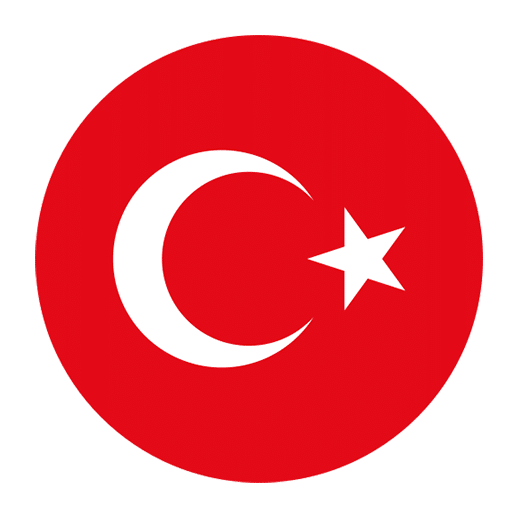Learning a new language can be both exciting and challenging. Turkish, with its rich history and unique structure, is no exception. One of the intriguing aspects of Turkish is how certain words can have multiple meanings depending on the context. In this article, we will explore two such words: “cam” and “can,” as well as “cam” and “hayat,” which translate to “glass” and “life” respectively in English. Understanding these words and their contexts will not only enhance your Turkish vocabulary but also deepen your appreciation for the language’s complexity and beauty.
Understanding “Cam” and “Can”
In Turkish, the words “cam” and “can” might look similar at first glance, but they are quite different in meaning.
Cam: Glass
The word “cam” in Turkish translates to “glass” in English. It can refer to the material used in windows, bottles, and other objects. Here are a few examples to illustrate its usage:
1. **Pencere camı kırıldı.**
– The window glass is broken.
2. **Cam şişe geri dönüşüme gidecek.**
– The glass bottle will go for recycling.
3. **Bu cam bardak çok güzel.**
– This glass cup is very beautiful.
As you can see, “cam” is used to describe items made of glass. It is a straightforward word that you will encounter frequently in daily conversations.
Can: Life/Spirit
On the other hand, “can” in Turkish means “life” or “spirit.” It is a more abstract concept compared to “cam” and is used in a variety of expressions to convey emotions, states of being, or relationships. Here are some examples:
1. **Onun canı çok sıkkın.**
– He/She is very upset.
2. **Canım acıyor.**
– I am in pain.
3. **Can dostum.**
– My soul mate/best friend.
The word “can” is often used to express intimate feelings and connections, making it a word rich with emotional significance.
Exploring “Cam” and “Hayat”
Another interesting pair of words to explore is “cam” and “hayat.” While “cam” again refers to “glass,” “hayat” translates to “life.” Understanding the nuances between these words and their uses in Turkish will further enrich your vocabulary.
Cam: Glass
As mentioned earlier, “cam” is a common term for glass. It remains consistent in its usage across different contexts. For instance:
1. **Cam kapı çok şık görünüyor.**
– The glass door looks very stylish.
2. **Mutfakta cam tabaklar var.**
– There are glass plates in the kitchen.
The utility of “cam” in describing everyday objects makes it a fundamental word in the Turkish language.
Hayat: Life
“Hayat,” on the other hand, is a broader term that encompasses the concept of “life.” It can be used to talk about life in general, the quality of life, or specific life experiences. Examples include:
1. **Hayat çok kısa.**
– Life is very short.
2. **Mutlu bir hayat istiyorum.**
– I want a happy life.
3. **Hayatında yeni bir sayfa açtı.**
– He/She has started a new chapter in his/her life.
Unlike “can,” which often conveys a more immediate, personal sense of life or spirit, “hayat” tends to be used in broader, more philosophical contexts.
Common Phrases and Expressions
Learning common phrases and expressions that include these words will help you become more fluent and understand the nuances better.
Expressions with “Cam”
1. **Cam gibi berrak:**
– Crystal clear (Literally: Clear as glass)
2. **Cam kırıkları:**
– Glass shards
3. **Cam tavan:**
– Glass ceiling (used in the same context as in English)
Expressions with “Can” and “Hayat”
1. **Canım yanıyor:**
– I am hurting (Literally: My soul is burning)
2. **Can yoldaşı:**
– Soulmate
3. **Hayat dolu:**
– Full of life
4. **Hayatını kazanmak:**
– To earn a living (Literally: To earn one’s life)
These phrases are commonly used in Turkish and can significantly improve your conversational skills.
Nuances and Cultural Context
Understanding the cultural context behind these words can also be very enlightening. For example, in Turkish culture, the concept of “can” is deeply intertwined with emotions and relationships. Calling someone “canım” (my soul) is a term of endearment that signifies a close bond.
Similarly, “hayat” is often used in philosophical discussions or when talking about one’s journey through life. It carries a weight that goes beyond the mere act of living, encompassing the experiences, struggles, and joys that make up a person’s existence.
Practical Exercises
To help you solidify your understanding of these words, here are some practical exercises you can try:
1. **Sentence Construction:**
– Create sentences using both “cam” and “can” in different contexts. For example:
– “Cam bardak kırıldı ama canım acımadı.” (The glass cup broke, but I didn’t feel any pain.)
2. **Contextual Understanding:**
– Read Turkish articles or books and identify the usage of “cam,” “can,” and “hayat.” Note the context in which each word is used.
3. **Conversation Practice:**
– Engage in conversations with native Turkish speakers and try to use these words appropriately. Pay attention to how they use them in return.
Conclusion
Learning the subtle differences between similar-sounding words in Turkish can greatly enhance your language skills and deepen your understanding of Turkish culture. “Cam,” “can,” and “hayat” are just a few examples of words that offer rich, nuanced meanings depending on the context. By practicing their usage and paying attention to how native speakers use them, you’ll become more fluent and confident in your Turkish language abilities.
Remember, language learning is a journey, and each new word you learn brings you one step closer to fluency. So, keep practicing, stay curious, and enjoy the process of discovering the beautiful intricacies of the Turkish language.

